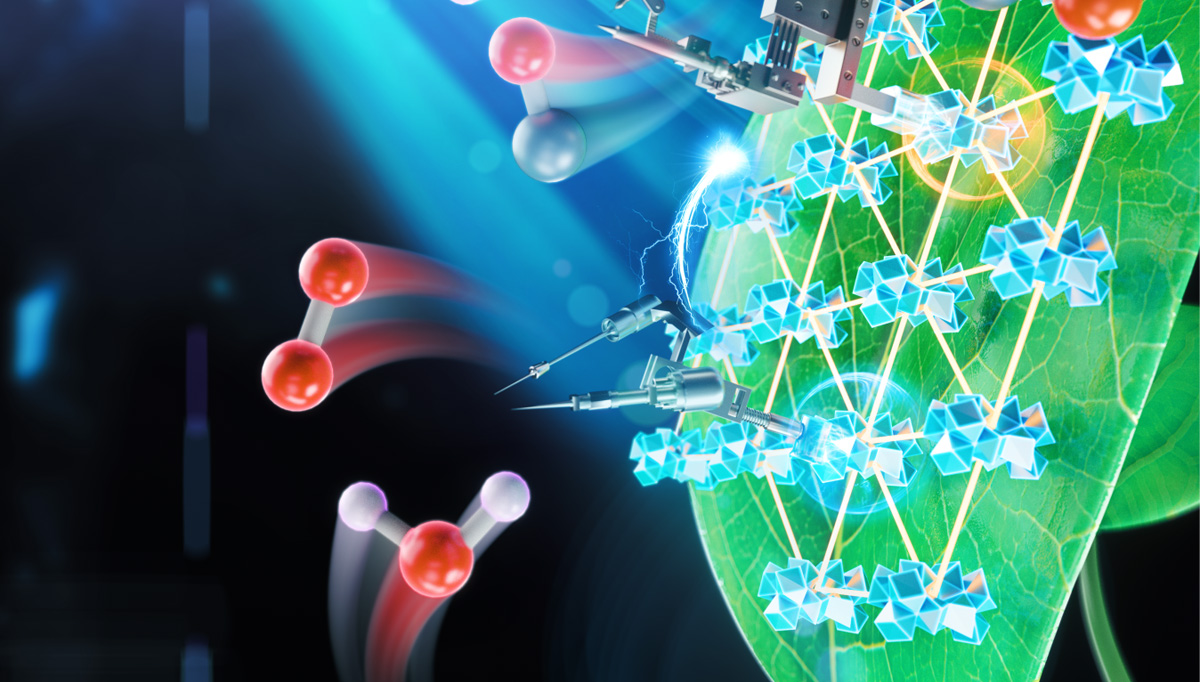
Chemists Create Artificial Photosynthesis 10 Times More Efficient than Existing Systems
November 16, 2022| |
A study conducted by six chemists at the University of Chicago shows an innovative new system for artificial photosynthesis that is more productive than previous artificial systems. Unlike regular photosynthesis, which produces carbohydrates from carbon dioxide and water, artificial photosynthesis could produce ethanol, methane, or other fuels.
Natural photosynthesis is built to produce carbohydrates, which fuel plants, animals, and humans, but not cars, which need much more concentrated energy. So researchers looking to create alternatives to fossil fuels have to re-engineer the process to create more energy-dense fuels, such as ethanol or methane. Chemist Wenbin Lin and his team thought that they might try adding something that artificial photosynthesis systems to date haven't included: amino acids.
The team started with a material called a metal-organic framework (MOF), a class of compounds made up of metal ions held together by organic linking molecules. They then designed the MOFs as a single layer to provide the maximum surface area for chemical reactions, and submerged everything in a solution that included a cobalt compound to ferry electrons around. Finally, they added amino acids to the MOFs and experimented to find out which worked best. The research team was able to improve both halves of the reaction, which include the process that breaks apart water and the one that adds electrons and protons to carbon dioxide. In both cases, the amino acids helped the reaction go more efficiently.
For more details, read the article in UChicago News.
| |
You might also like:
- Artificial Photosynthesis Produces Food without Sunshine
- Altered Gene Triggers Photosynthetic Overdrive to Increase Plant Economic Value and Fight Climate Change
- Berkeley Lab Develops An Artificial Photosynthetic System
Biotech Updates is a weekly newsletter of ISAAA, a not-for-profit organization. It is distributed for free to over 22,000 subscribers worldwide to inform them about the key developments in biosciences, especially in biotechnology. Your support will help us in our mission to feed the world with knowledge. You can help by donating as little as $10.
-
See more articles:
-
News from Around the World
- Initiative to Uplift Agrifood Systems Launched in COP27
- Chemists Create Artificial Photosynthesis 10 Times More Efficient than Existing Systems
- SEAsian Representatives to COP15-MOP10 Briefed on CBD Updates and Negotiations
- GRDC and Partners Target to Boost Wheat's Heat Tolerance
- Forum on Philippine Biotech Regulations
- ASCA5 Highlights CBD Updates, Science Diplomacy in Preparation for COP15-MOP10
- EFSA Finds No New Hazards for GM Cotton 281-24-236 × 3006-210-23
- Genetically Modified Houseplant Pothos to Reduce Indoor Air Pollution
-
Research Highlights
- Scientists Identify Wheat Genetically Resistant to Fungus Causing Snow Mold
- NTU Singapore Scientists Genetically Engineer Plants to Increase Oil Content
-
Plant
- Researchers Develop an Optimized CRISPR tool for Tobacco
- Restoring the Red Seed Coat in Rice through Genome Editing
-
Read the latest: - Biotech Updates (December 17, 2025)
- Gene Editing Supplement (December 17, 2025)
- Gene Drive Supplement (February 22, 2023)
-
Subscribe to BU: - Share
- Tweet

